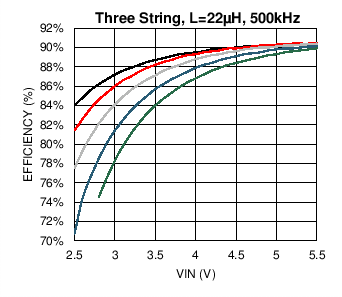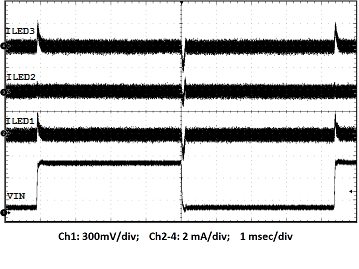SNOSCS2D November 2013 – March 2019 LM3697
PRODUCTION DATA.
- 1 Features
- 2 Applications
- 3 Description
- 4 Revision History
- 5 Pin Configuration and Functions
- 6 Specifications
-
7 Detailed Description
- 7.1 Overview
- 7.2 Functional Block Diagram
- 7.3 Feature Descriptions
- 7.4 Device Functional Modes
- 7.5 Register Maps
- 8 Application and Implementation
- 9 Power Supply Recommendations
- 10Layout
- 11Device and Documentation Support
- 12Mechanical, Packaging, and Orderable Information
Package Options
Refer to the PDF data sheet for device specific package drawings
Mechanical Data (Package|Pins)
- YFQ|12
Thermal pad, mechanical data (Package|Pins)
Orderable Information
8.2.3 Application Performance Plots
VIN = 3.6 V, full-scale current = 20.2 mA, LEDs are WLEDs part # SML-312WBCW(A), Typical Application Circuit , TA = 25°C unless otherwise specified. Efficiency is VOUT × (IHVLED1 + IHVLED2 + IHVLED3)/(VIN × IIN), matching curves are (ΔILED_MAX/ILED_AVE).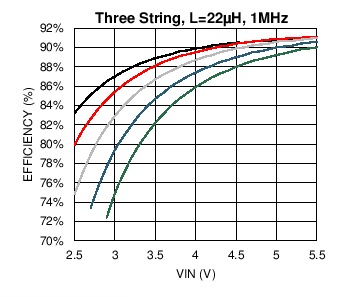
| Top to Bottom: 3x3, 3x4, 3x5, 3x6, 3x7 (LEDs) |
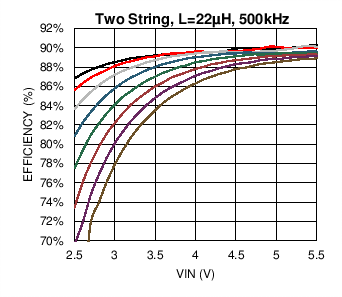
| Top to Bottom: 2x3, 2x4, 2x5, 2x6, 2x7, 2x8, 2x9, 2x10 (LEDs) |
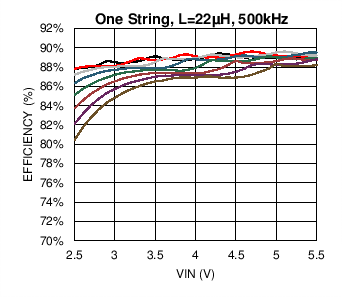
| Top to Bottom: 1x3, 1x4, 1x5, 1x6, 1x7, 1x8, 1x9, 1x10 (LEDs) |
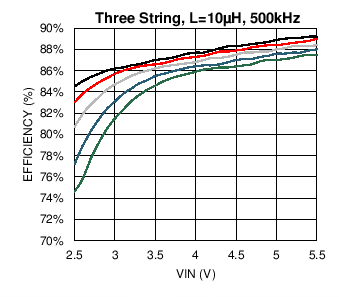
| Top to Bottom: 3x3, 3x4, 3x5, 3x6, 3x7 (LEDs) |
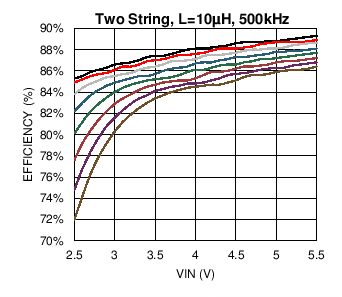
| Top to Bottom: 2x3, 2x4, 2x5, 2x6, 2x7, 2x8, 2x9, 2x10 (LEDs) |
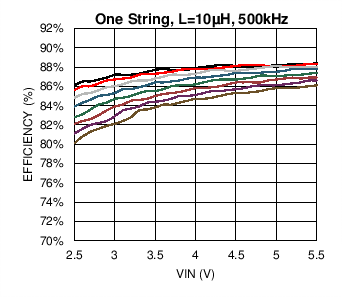
| Top to Bottom: 1x3, 1x4, 1x5, 1x6, 1x7, 1x8, 1x9, 1x10 (LEDs) |
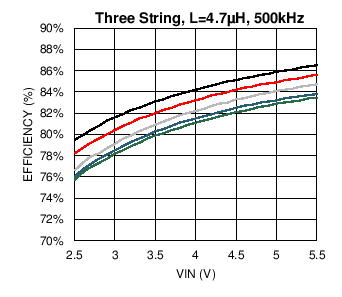
| Top to Bottom: 3x3, 3x4, 3x5, 3x6, 3x7 (LEDs) |

| Top to Bottom: 2x3, 2x4, 2x5, 2x6, 2x7, 2x8, 2x9, 2x10 (LEDs) |
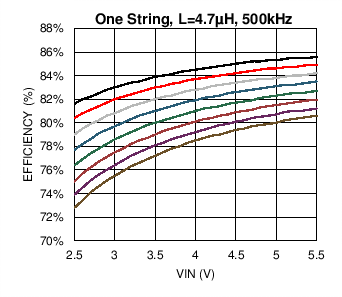
| Top to Bottom: 1x3, 1x4, 1x5, 1x6, 1x7, 1x8, 1x9, 1x10 (LEDs) |

| Top to Bottom: 3x3, 3x4, 3x5, 3x6, 3x7 (LEDs) |
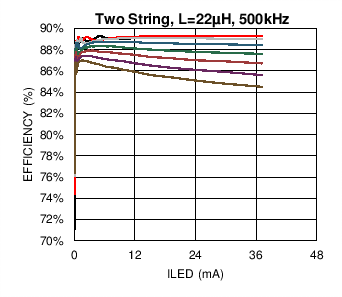
| Top to Bottom: 2x3, 2x4, 2x5, 2x6, 2x7, 2x8, 2x9, 2x10 (LEDs) |
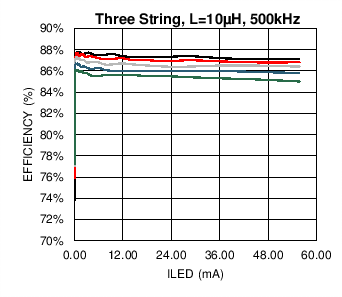
| Top to Bottom: 3x3, 3x4, 3x5, 3x6, 3x7 (LEDs) |
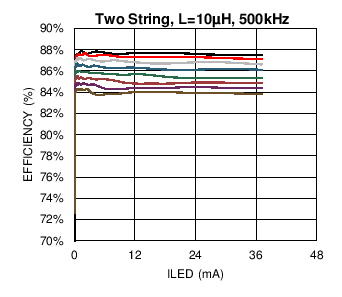
| Top to Bottom: 2x3, 2x4, 2x5, 2x6, 2x7, 2x8, 2x9, 2x10 (LEDs) |
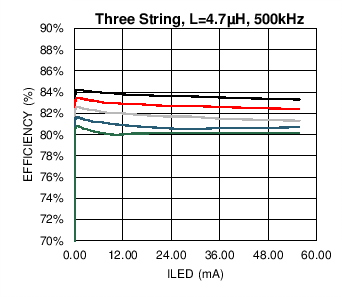
| Top to Bottom: 3x3, 3x4, 3x5, 3x6, 3x7 (LEDs) |
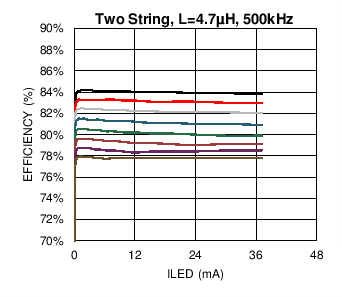
| Top to Bottom: 2x3, 2x4, 2x5, 2x6, 2x7, 2x8, 2x9, 2x10 (LEDs) |
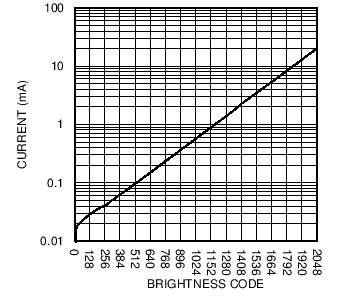
| Exponential Mapping |
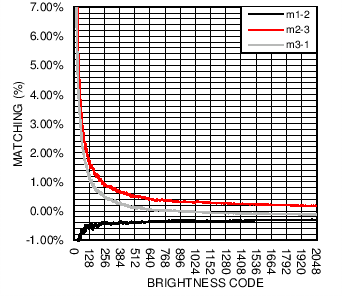
| Linear Mapping |
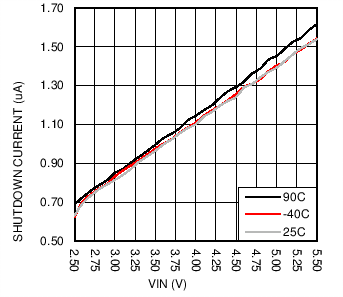
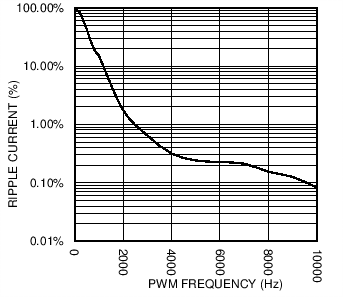 Figure 52. Led Current Ripple vs FPWM
Figure 52. Led Current Ripple vs FPWM 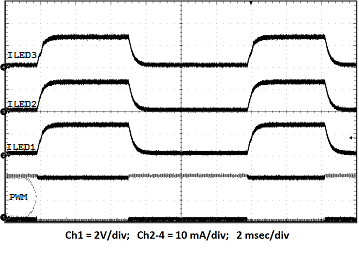
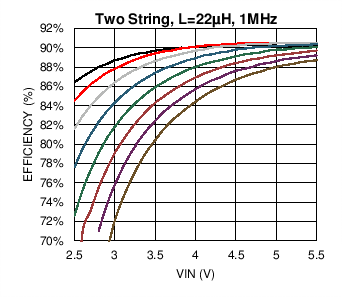
| Top to Bottom: 2x3, 2x4, 2x5, 2x6, 2x7, 2x8, 2x9, 2x10 (LEDs) |
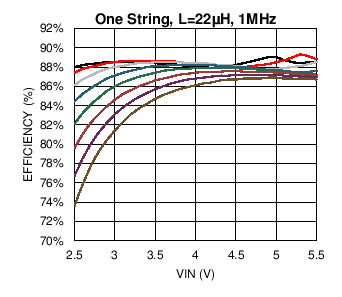
| Top to Bottom: 1x3, 1x4, 1x5, 1x6, 1x7, 1x8, 1x9, 1x10 (LEDs) |
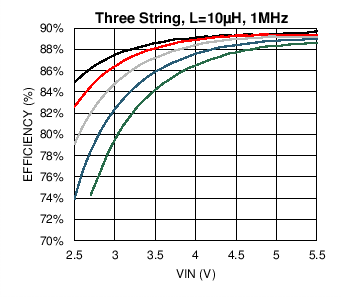
| Top to Bottom: 3x3, 3x4, 3x5, 3x6, 3x7 (LEDs) |

| Top to Bottom: 2x3, 2x4, 2x5, 2x6, 2x7, 2x8, 2x9, 2x10 (LEDs) |
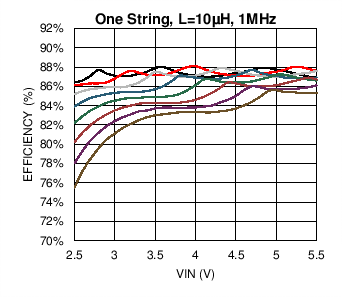
| Top to Bottom: 1x3, 1x4, 1x5, 1x6, 1x7, 1x8, 1x9, 1x10 (LEDs) |
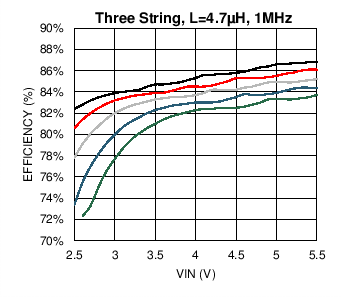
| Top to Bottom: 3x3, 3x4, 3x5, 3x6, 3x7 (LEDs) |
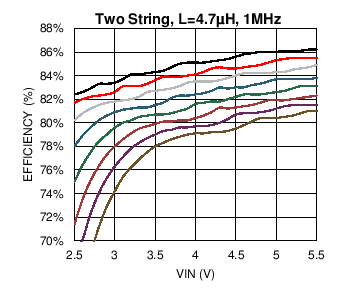
| Top to Bottom: 2x3, 2x4, 2x5, 2x6, 2x7, 2x8, 2x9, 2x10 (LEDs) |

| Top to Bottom: 1x3, 1x4, 1x5, 1x6, 1x7, 1x8, 1x9, 1x10 (LEDs) |
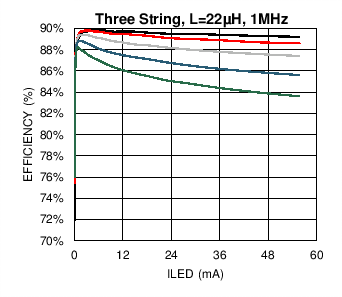
| Top to Bottom: 3x3, 3x4, 3x5, 3x6, 3x7 (LEDs) |
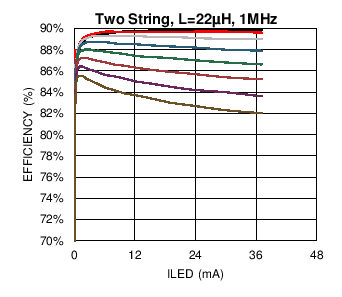
| Top to Bottom: 2x3, 2x4, 2x5, 2x6, 2x7, 2x8, 2x9, 2x10 (LEDs) |
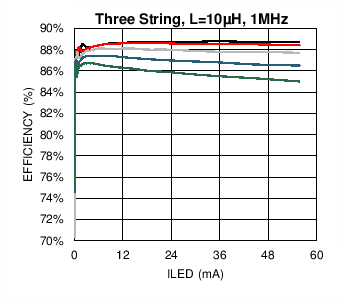
| Top to Bottom: 3x3, 3x4, 3x5, 3x6, 3x7 (LEDs) |
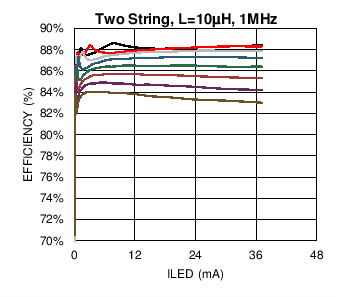
| Top to Bottom: 2x3, 2x4, 2x5, 2x6, 2x7, 2x8, 2x9, 2x10 (LEDs) |
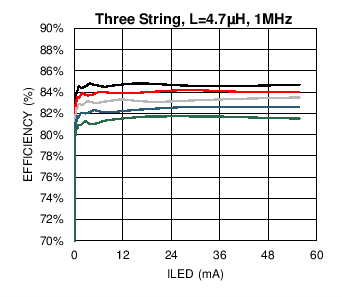
| Top to Bottom: 3x3, 3x4, 3x5, 3x6, 3x7 (LEDs) |
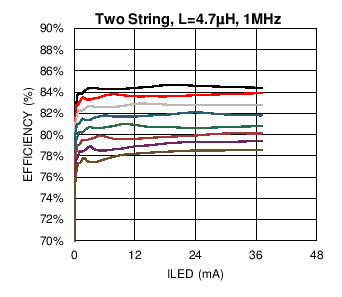
| Top to Bottom: 2x3, 2x4, 2x5, 2x6, 2x7, 2x8, 2x9, 2x10 (LEDs) |
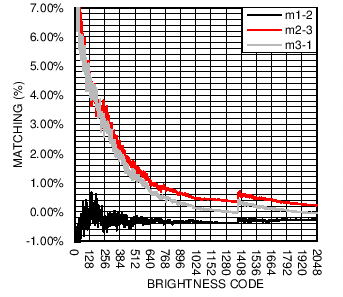
| Exponential Mapping |
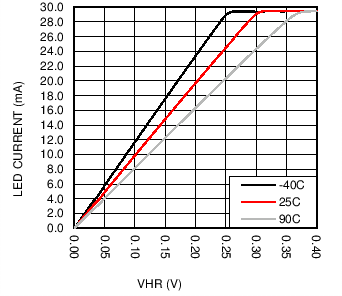
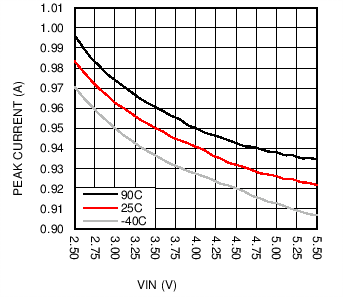

| 8s2p LED configuration | ||
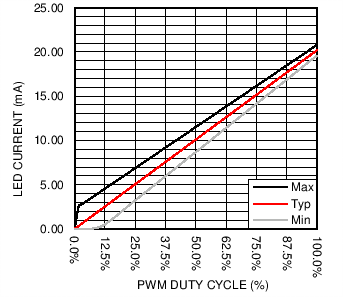 Figure 55. HVLED Current Vs PWM Input Duty Cycle
Figure 55. HVLED Current Vs PWM Input Duty Cycle 